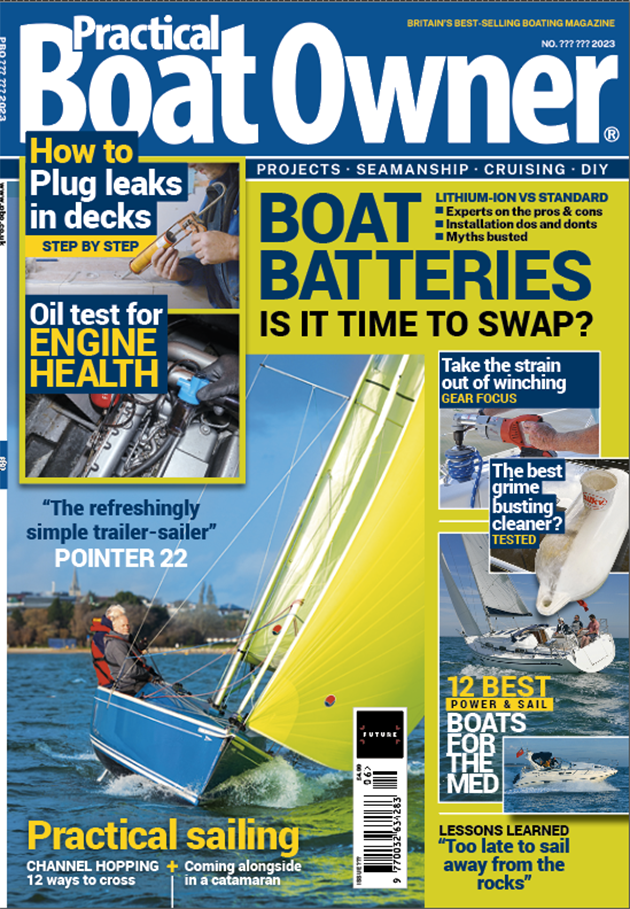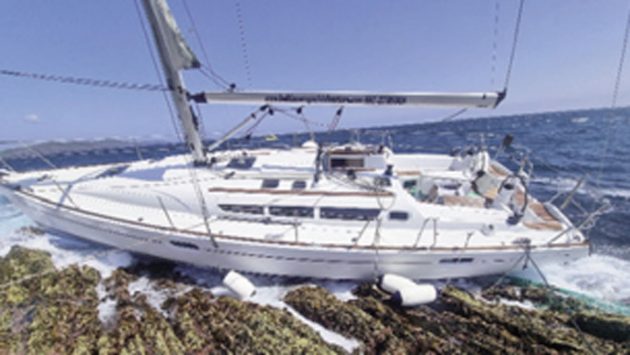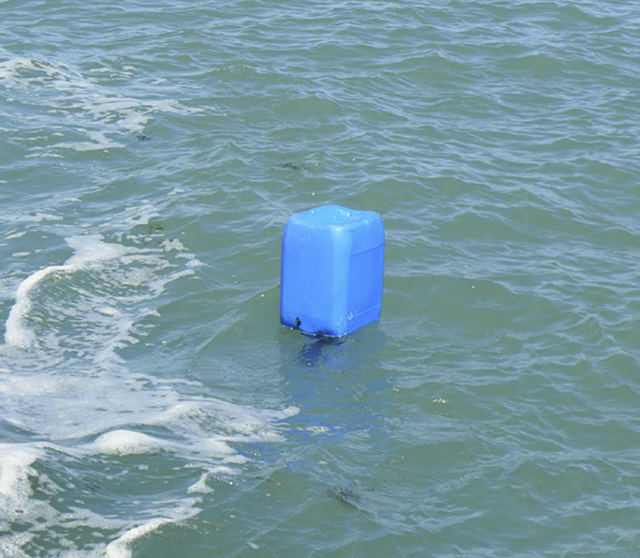The Marine Casualty Investigation Board (MCIB) report concluded that a discarded trawl net "was the root cause" of the loss of the Jeanneau Sun Odyssey 42i, Inish Ceinn
A discarded trawl net which wrapped around the propeller, rudder and keel of the Jeanneau Sun Odyssey 42i, Inish Ceinn was the “root cause” of the yacht’s grounding and subsequent loss, according to the Marine Casualty Investigation Board (MCIB).
The yacht has just been refitted and undergone successful sea trials before its final voyage.
The skipper, who is a Yachtmaster Offshore and sailing instructor, and the four crew, left Baltimore in Ireland on 6 June 2023 for a short trip to Cape Clear Island; all were wearing lifejackets onboard.
The weather at the time was a Force 3-4, with an easterly wind.
According to the MCIB report, Inish Ceinn was sailing under mainsail, and an experienced crew member was on the bow as bowman to look out for pot buoys, as this area of the coast is well known as a lobster fishing area.
The yacht was sailing at 5 knots when at around 1430, the skipper felt the yacht slow down rapidly and turn in the wind. The crew could see nothing in the water so the decision was made to start the engine and the propeller was engaged.

Course planned and estimated position of contact with the trawl net and aground position shown. Credit: MCIB
A vibration was then felt and a burning smell was noticed; the skipper immediately stopped the engine and the mainsail was furled, but the yacht was immobilised as the skipper couldn’t turn the wheel and rudder.
The wind and tide began quickly pushing Inish Ceinn towards the shore, and the skipper tried the engine again but the propeller was fouled.
As the anchor was being prepared, the Jeanneau Sun Odyssey 42i hit a submerged rock.
“The Skipper decided not to use the anchor as the vessel would then go stern onto the rocks. The vessel sat beam onto the rocks and the persons onboard (except the Skipper) jumped off onto the rocks and held a rope to try and keep the vessel from banging off the rocks as far as possible,” stated MCIB investigators.
The skipper used the VHF radio to make a Mayday call, which was acknowledged by a local boat and relayed to the Valentia Coast Guard.
With a rising tide and onshore wind, Inish Ceinn was being pushed onto the rocks, and the skipper decided to abandon the yacht.

The green trawl net can be seen behind the boat. Credit: MCIB
As he climbed onto the rocks, he saw a bright green trawl net wrapped around the boat’s bulb keel, rudder and propeller.
The skipper and crew were rescued from the rocks by the crew of the Baltimore Lifeboat; a rescue helicopter also monitored proceedings from the air but was not required to participate.
The skipper and the RNLI crew discussed towing Inish Ceinn off the rocks, but it was decided the risk of the lifeboat being fouled by the same trawl net was too great. By this stage, the Jeanneau Sun Odyssey 42i was holed and had started to break up; the boat sank half an hour later.
Continues below…
What to do when you run aground
Whether you go to sea under power or sail, you'll almost certainly find yourself aground at some point in your…
Call for more reporting of fishing gear entanglement
The RYA says it has received only 85 reports since it launched its online fishing entanglement form and more is…
Lessons learned from sailing into Guernsey after engine failure
Creeping out of Dartmouth before first light for what promised to be a lively sail to Guernsey, the forecast was…
Boat propeller: How to choose the right one for your boat
The correct prop can have a dramatic effect on your boat's performance. Ali Wood learns how you can save fuel,…
The MCIB concluded that once the trawl net had wrapped around the propeller, causing the clutch to burn, there was “very little anyone onboard could do in this situation.”
It also noted that because the trawl net was green, it would have been “very hard to see” in the 1-1.5m waves, and there were no buoys or markers to make it visible.
Under EU regulations, every trawl net must be tagged and all lost trawl nets must be reported so a navigation warning can be issued to seafarers. No warning or report had been made about the green trawl net, which was not tagged; there were also no warnings in place for the area Inish Ceinn was sailing in.
Amongst its safety recommendations, the MCIB recommended that the Minister for Transport issue a Marine Notice
- advising skippers of yachts navigating in areas which are known to have poorly marked fishing gear, lobster pots etc. that they should ensure the vessel’s anchor is ready for immediate use.
- advising fishermen of the dangers of discarding nets from fishing vessels and setting out the obligatory regime on waste, plastics and recycling.
- reminding fishermen that if a net is lost, every effort must be made to recover it to enable it to be disposed of responsibly to shore reception facilities in accordance with the European Union (Port Reception Facilities for the Delivery of Waste from Ships) Regulations 2022 S.I. No. 351 of 2022.
- reminding fishermen that if a net cannot be recovered, the responsible authorities must be advised in accordance with Marpol Annex V so that a suitable navigational warning should be issued in the area that the net was lost.
- reminding fishing vessel operators that they are required to record the discharge or loss of fishing gear in the Garbage Record Book or the ship’s official logbook as specified in Regulations 7.1 and 10.3.6 of MARPOL Annex V.
The full MCIB report on the grounding and sinking of Inish Ceinn can be read here.
Get more sailing news with a subscription to Practical Boat Owner

A subscription to Practical Boat Owner magazine costs around 40% less than the cover price.
Print and digital editions are available through Magazines Direct – where you can also find the latest deals.
PBO is packed with information to help you get the most from boat ownership – whether sail or power.
-
-
-
- Take your DIY skills to the next level with trusted advice on boat maintenance and repairs
- Impartial in-depth gear reviews
- Practical cruising tips for making the most of your time afloat
-
-
Follow us on Facebook, Instagram, TikTok and Twitter








